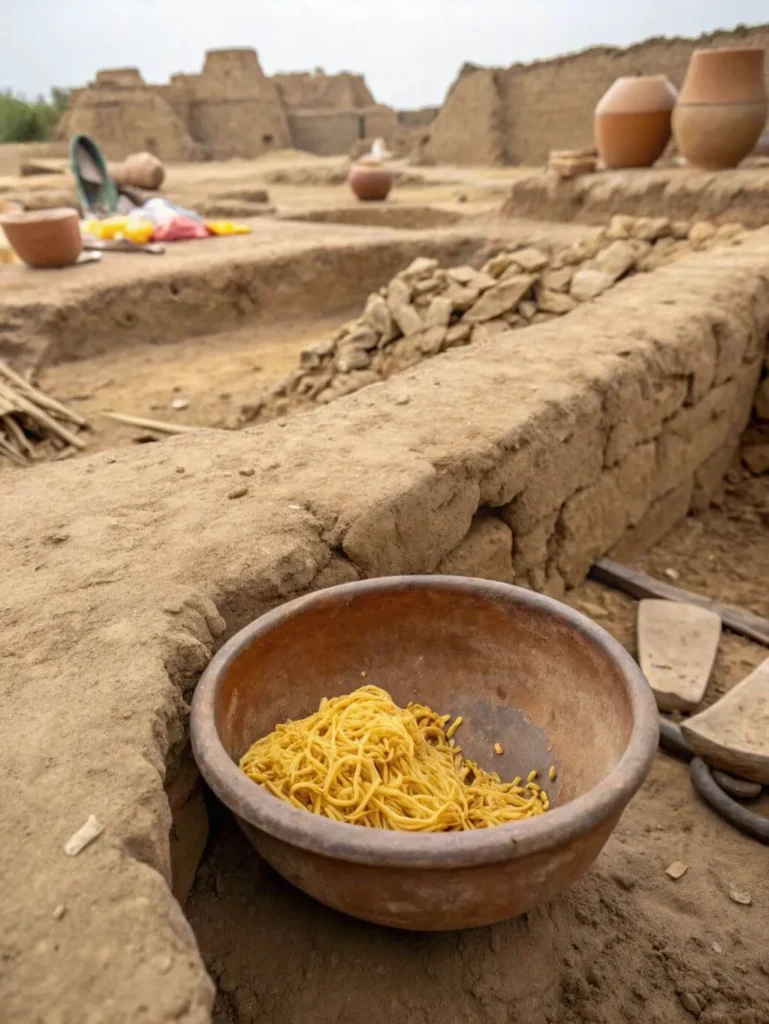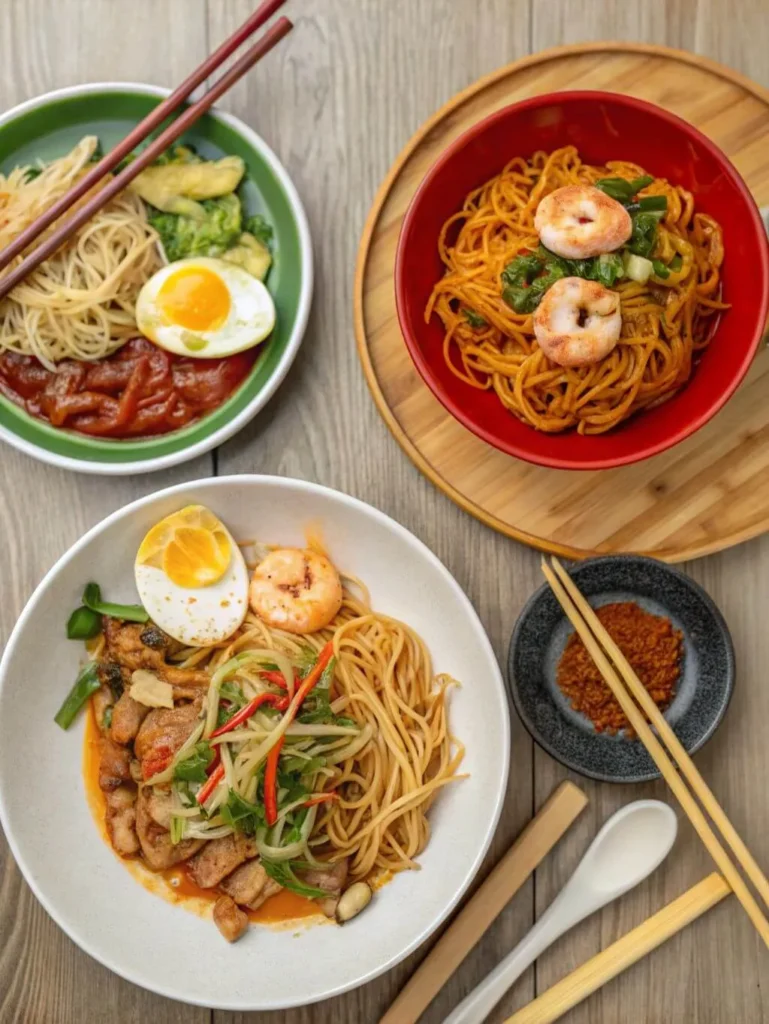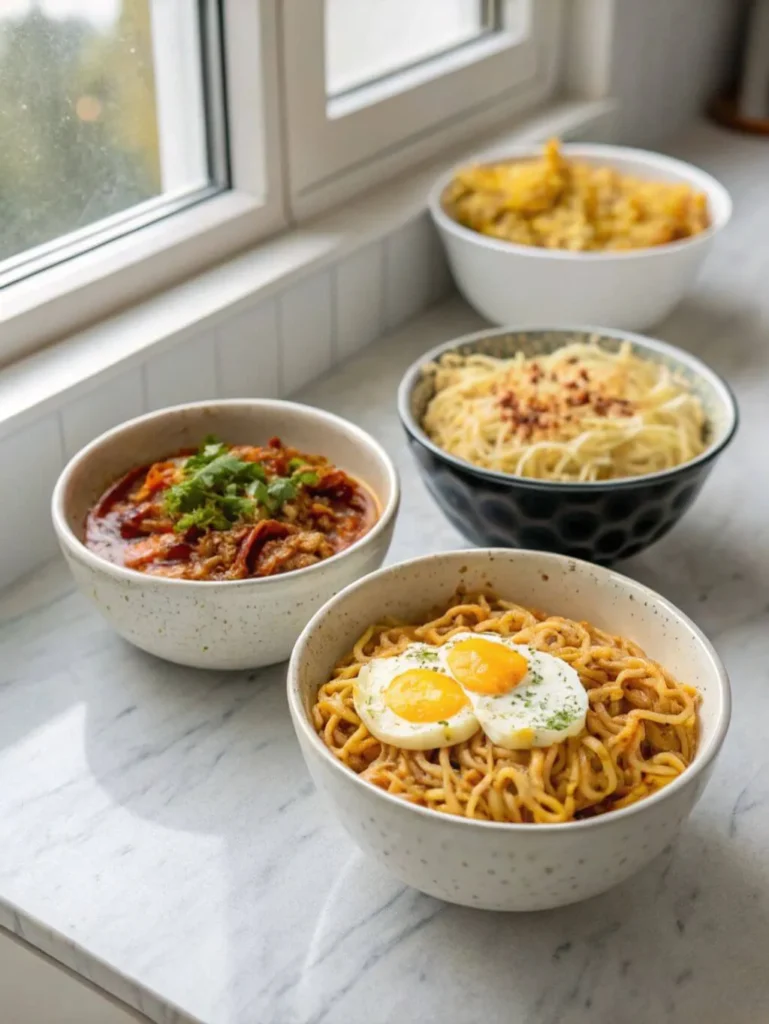As a little girl in my grandmother’s kitchen, hands dusted with flour and a heart full of curiosity, I never imagined that those humble noodles we rolled by hand would connect me to kitchens across the globe. But that’s exactly what happened. From the alleys of Beijing to pasta houses in Palermo, my life has followed the noodle.
And I’ve learned something along the way: noodles are more than just food—they’re a passport. They’ve conquered continents without a single army, traveling instead through trade routes, migration, and mouthwatering invention. Every culture has made noodles their own, bending them to local tastes, rituals, and resources.
So how did noodles conquer the world? That’s exactly what we’ll explore. From ancient millet strands buried in Chinese soil to modern bowls dressed in Alfredo, this is the delicious, sprawling story of how one simple food united the planet.
The First Threads: Early Noodle Discoveries
To fully appreciate how noodles conquered the world, we must begin at the very first slurp. Noodles weren’t always global staples—they were once local innovations, born from necessity, grain, and human creativity.
Who Found the 4,000-Year-Old Noodles?
In 2005, archaeologists uncovered a game-changing find in the Lajia region of China: a sealed bowl of 4,000-year-old millet noodles buried under layers of sediment. Preserved by a sudden flood, these ancient strands are the world’s oldest known evidence of noodles.

This discovery marked the first tangible proof in the ongoing story of how noodles conquered the world. It placed China at the top of the timeline, giving historians a new starting point for one of the most beloved foods on Earth.
Noodle-Like Foods in Ancient Cultures
While China holds the earliest known example, other regions developed their own dough-based traditions. In the Middle East, ancient Arabs made itriyya—a dried noodle considered an early precursor to modern pasta.
. Meanwhile, early Mediterranean civilizations crafted flat pasta sheets that evolved into dishes like lasagna.
Still, the Lajia bowl stands as a cornerstone in the global story of how noodles conquered the world. It proves that long before delivery apps and instant ramen, people were already turning flour and water into magic.
That bowl didn’t just hold food—it held the first chapter in a culinary revolution.
East vs. West: The Origin Tug-of-War
To fully understand how noodles conquered the world, we have to address one of the oldest culinary rivalries: Did noodles originate in Italy or Asia? The answer isn’t black and white—but it’s deeply rooted in both fact and folklore.
The Marco Polo Myth
For generations, the myth prevailed that Marco Polo introduced noodles to Italy after visiting China in the 13th century. It’s a charming tale, but modern historians agree: Italy already had pasta. The earliest written records mention dried pasta—macaroni and lagana—well before Polo’s return.
Still, the myth gained traction and helped frame the Western narrative of how noodles conquered the world. But the truth is more nuanced.
Parallel Origins
In China, millet-based noodles have been dated back more than 4,000 years, with physical evidence found in the Lajia region. That bowl didn’t just hold food—it held proof of early innovation and the starting point for how noodles conquered the world.
Meanwhile, in Italy, durum wheat pasta evolved into dozens of shapes and techniques, influenced by Roman, Arabic, and Mediterranean cuisines. Although developed independently, this pasta tradition became a cornerstone in Europe’s role in how noodles conquered the world.
🌍 Culinary Convergence
Instead of a single origin, the history of noodles reveals a beautiful case of convergent culinary evolution where cultures across the world created similar dishes independently. Different cultures created similar solutions—stretching dough into something universally beloved.
By recognizing both China and Italy’s contributions, we celebrate the dual legacies that shaped how noodles conquered the world—not by competition, but by coexistence.
Asia to Everywhere – Global Domination
If ancient China was the birthplace, and Italy perfected pasta craft, then Asia was the launchpad for how noodles conquered the world. Through trade, colonization, and culinary curiosity, noodles have transformed to fit almost every culture’s taste.

Japan – The Ramen Revolution
From its Chinese roots, ramen evolved into a national symbol in Japan. Every bowl tells a regional story—shoyu in Tokyo, miso in Hokkaido, tonkotsu in Kyushu. Udon, soba, and somen add even more diversity, each with unique broths, textures, and rituals.
Korea – Noodles with Cultural Depth
In Korea, naengmyeon (chilled buckwheat noodles) is more than refreshing—it’s tied to heritage and post-war reunification. Other classics like japchae (glass noodles) showcase how noodle dishes carry symbolic and emotional weight.
Thailand & Vietnam – Bold Flavors in Every Bite
Pad Thai and pho have traveled far beyond their origins, becoming beloved comfort foods around the world. Their balance of sour, sweet, and spicy encapsulates Southeast Asia’s influence on how noodles conquered the world.
The Middle East & North Africa
In early Arabic texts, noodles appear as itriyya—boiled or dried dough shaped into strands. Vermicelli found its place in couscous, soups, and stews across North Africa—showcasing the noodle’s remarkable adaptability in global cuisines.
🇮🇹 Europe – The Pasta Empire
Italy’s transformation of noodles into artisanal pasta remains unmatched in craft and tradition. From spaghetti and angel hair to pappardelle and lasagna sheets, pasta became Europe’s signature take on how noodles conquered the world.
Try these Italian staples at home:
One Food, Infinite Forms
Whether slurped in a Tokyo alley or twirled in a Roman trattoria, noodles reflect each place they touch. That’s the magic of noodles—they bend, blend, and belong wherever they go, effortlessly crossing borders and cultures.
Modern Takeover – Instant & Instagram
Noodles aren’t just a relic of the past—they’re trendsetters of the present. In fact, some would argue that this chapter of how noodles conquered the world is the most explosive yet. From dorm rooms to digital feeds, noodles are more influential than ever.

Instant Noodles: The Global Pantry Staple
Invented in 1958 by Momofuku Ando in Japan, instant noodles revolutionized food access. Fast, affordable, and shelf-stable, they’ve become a universal symbol of convenience. In countries like South Korea, India, Nigeria, and the U.S., instant ramen is both a budget meal and a cultural icon.
Whether it’s spicy Shin Ramyun, creamy Indonesian Indomie, or homemade hacks with egg and chili oil, instant noodles prove yet again how noodles conquered the world through accessibility and innovation.
Instagram-Worthy Bowls
Noodles have become social media stars—appearing in slow-mo slurps, noodle pulls, and ASMR bite shots. Viral recipes like garlic chili oil noodles, ram-don (jjapaguri), and cheesy ramen mashups have introduced noodles to a whole new generation of home cooks.
This visual renaissance plays a huge role in how noodles conquered the world—because every share, like, and comment spreads the noodle love even further.
Wellness & Alternative Noodles
Today’s health-conscious eaters want more than just flavor—they want function. Enter:
- Shirataki noodles – Low-calorie, keto-friendly strands made from konjac root.
- Zoodles – Spiralized zucchini for low-carb pasta swaps.
- Chickpea & lentil noodles – Gluten-free options packed with protein.
Explore healthy noodle options:
In the modern world, how noodles conquered the world is no longer just about geography—it’s about adaptability. And noodles continue to evolve with us.
❓ Frequently Asked Questions
❓Who invented the noodle?
While multiple civilizations developed noodle-like foods, the earliest known noodles were discovered in China, dating back over 4,000 years. These ancient strands were made from millet, proving that Chinese communities were likely the first to invent the noodle.
❓Who found the 4,000-year-old noodles?
A team of Chinese archaeologists made the discovery in 2005 at the Lajia archaeological site. The noodles were preserved in an overturned bowl beneath layers of sediment caused by a catastrophic flood.
❓Did noodles originate in Italy or Asia?
The evidence points to Asia—specifically China—as the original home of noodles. While Italy developed its own iconic pasta traditions, these were independent of Asia’s earlier noodle innovations.
❓What is the history of noodles in China?
Chinese records date noodles back to the Han Dynasty (206 BCE – 220 CE). Over centuries, styles like lamian (hand-pulled), dao xiao mian (knife-cut), and chow mein evolved—cementing China’s role in how noodles conquered the world.
Explore noodle traditions with these recipes:
Lo Mein Noodles
Chinese Chow Mein
Easy Spaghetti Recipe
🌍 Conclusion – One World, One Noodle
From ancient millet strands in China to creamy Alfredo on Italian dinner tables, noodles have done more than feed us—they’ve connected us. They’ve become a bridge between cultures, a canvas for creativity, and a comfort during hard times.
That’s the beauty of how noodles conquered the world. They didn’t do it through force or fame. They did it through flavor, flexibility, and familiarity. Across continents and centuries, noodles adapted to local hands and hearts—becoming something both unique and universal.
As a lifelong noodle devotee and chef, I’ve seen firsthand how one simple ingredient can open doors to history, healing, and heritage. Whether you’re twirling spaghetti, sipping soba, or loading up a late-night bowl of instant ramen, you’re participating in a story thousands of years in the making.
🍽️ Start Your Noodle Journey
Try these globally inspired recipes and taste the legacy for yourself:
- Fettuccine Alfredo Recipe
- Easy Spaghetti Recipe
- Lo Mein Noodles
- Homemade Noodles Recipe
- Shirataki Noodles
Thanks for following this flavorful journey with me. Here’s to the noodle—past, present, and wherever it lands next.


1 thought on “How Noodles Conquered the World: A Culinary Tale Told One Strand at a Time”